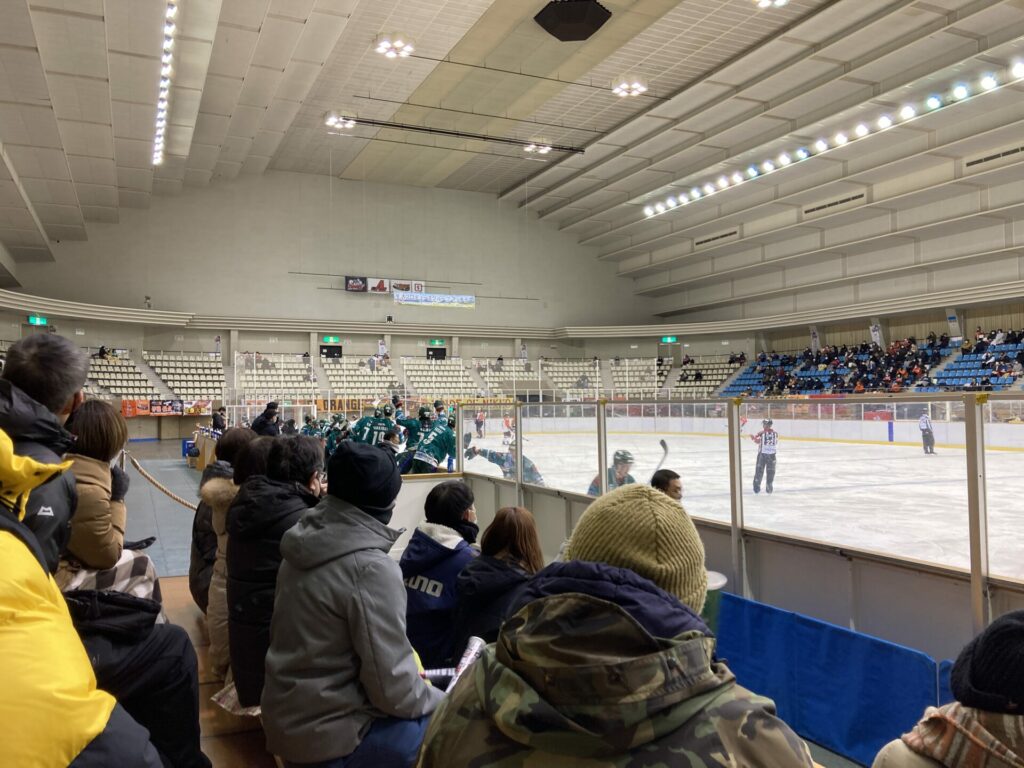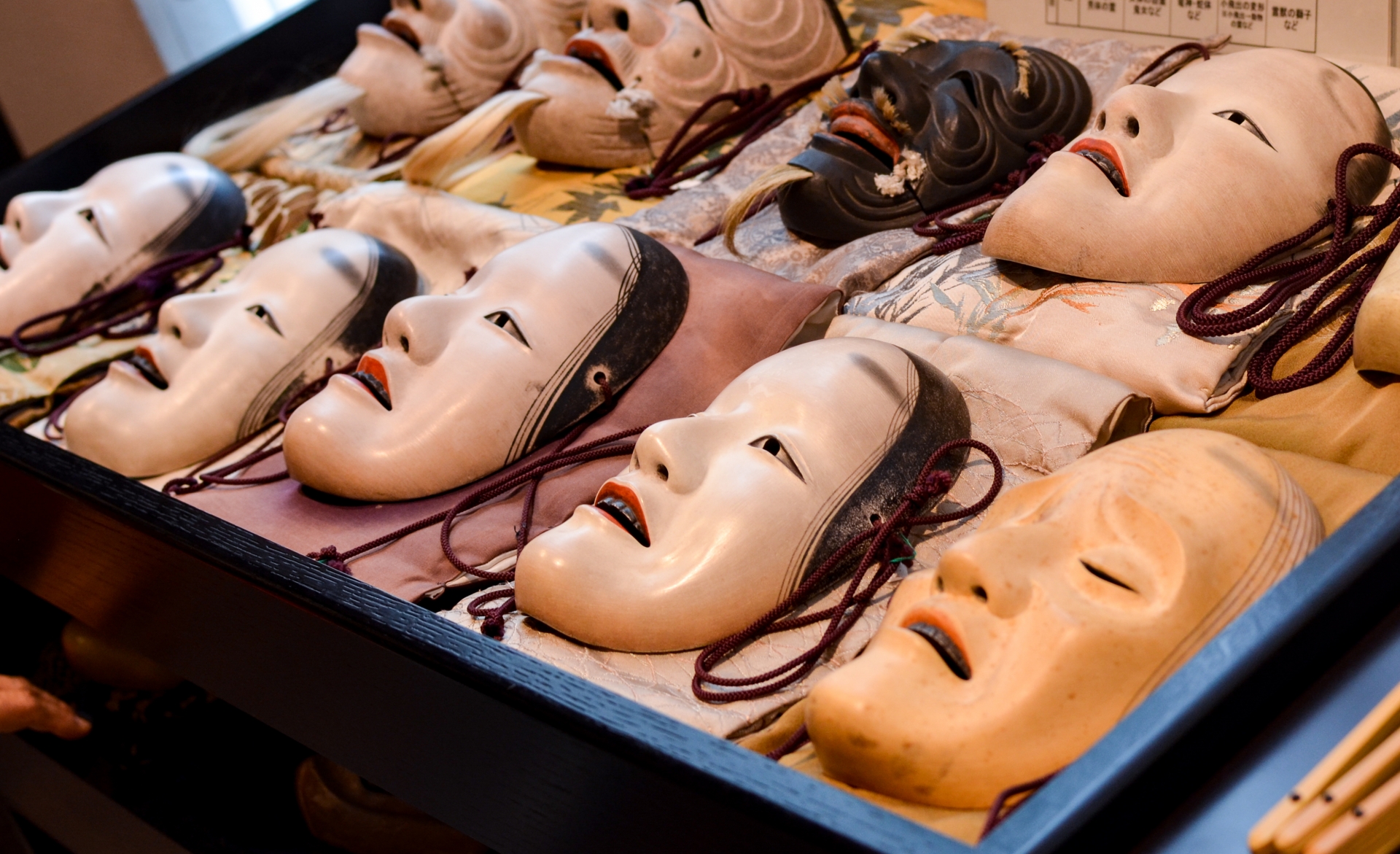Hokkaido is the home of ice hockey in Japan
Last week I went to see an ice hockey match. Here in Hokkaido, skiing and skating are the two major winter sports, but ski and skate areas are completely separate. My hometown is a ski area, and I haven’t skated so much and had never even once seen a professional ice hockey match. How was it? It was awesome, without exaggeration! To tell the truth, I have no idea of the rules but could enjoy it to the full. The problem is its speed. I know the speed of play is one of the attractions of ice hockey, but the players’ moves were so quick that I couldn’t fully understand what was going on.
By the way, did you know that ice hockey goalkeepers have no longer worn the iconic mask of Jason in the Friday the 13th series? I was disappointed by the fact and somehow thought about Japanese Noh masks (please see the above image) during the match. Both of them are creepy, but in two different ways. The ice-hockey mask scares us by the absence of expression; the Noh masks by the expression slightly changing depending on the viewing point. On second thought, I think it’s almost the same in a broad sense why we’re scared of the masks. We may just make our imagination go wild and project the image of something evil onto the masks.

Noh, the Japanese traditional play since the 14th century
To tell the truth, the Noh masks, different from the ice-hockey mask, are intentionally made to be scary. I have to explain what Noh is first in brief. Noh is the Japanese traditional play that was established in the 14th century. In most cases, the play portrays human emotions, especially sorrow, anger, nostalgia, etc. through relationships with unworldly things like ghosts. The Noh masks are for actors playing the roles of such unworldly things. The Noh actors don’t change masks in a play but express various emotions only by changing the angle how the mask is viewed by the audience. This is the reason why the Noh masks are designed to be slightly spooky and look in various ways depending on the viewing point.
Surprisingly enough, I’ve learned there are some Noh masks that have been used for more than 600 years. Even now, the authentic Noh masks are made by hand. The professional craftspeople closely study and copy masterpieces by curving it little by little. The secret to realize the expressive but (at the same time) bland facial expression on the Noh masks is to make it left-right asymmetry, very slightly though, the same as the faces of us, ordinary people. I guess this would be one of the good fields where wood working skills have been forged in Japan, and some spiritual elements may come down to our wooden furniture industry.
Hokkaido is the kingdom of ski and skate in Japan
Unfortunately, it’s difficult to watch a Noh play around here. Compared with other prefectures in the main land of Japan, Hokkaido has a much shorter history like only about 150 years since its development, and I’m afraid we don’t have any authentic Noh artists, stages, etc. Alternatively (as it may not be alternative at all), you can skate everywhere, even in front of the central station if it’s here in Asahikawa (as shown below).


Shungo Ijima
He is travelling around the world. His passion is to explain Japan to the world, from the unique viewpoint accumulated through his career: overseas posting, MBA holder, former official of the Ministry of Finance.

